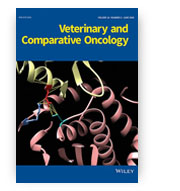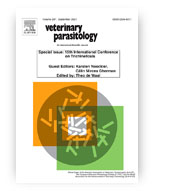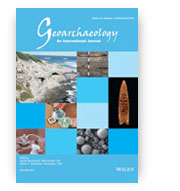A newly established canine NK-type cell line and its cytotoxic properties
Małgorzata Grudzień, Aleksandra Pawlak, Kutkowska Justyna, Ewa Zioło, Edyta Wysokińska, Wojciech Hildebrand, Bożena Obmińska-Mrukowicz, Leon Strządała, Andrzej Rapak
Veterinary and comparative oncology
 We established a canine natural killer (NK)-type cell line called CNK-89 derived from a dog with NK cell neoplasia. Immunophenotyping analysis showed positive staining for CD5, CD8, CD45, CD56, CD79a and NKp46, while negative for CD3, CD4, CD14, CD20, CD21, CD34, Thy1, IgG, IgM and MHCII. Polymerase chain reaction analysis revealed the presence of CD56, NKG2D, NKp30, NKp44, NKp46 and perforin, but the absence of CD16, Ly49 and granzyme B mRNA. Treating CNK-89 cells with IL-2 did not change the expression of activating receptors, TNFα and IFNγ secretion and cytotoxic activity, however, treatment with IL-12 alone or in combinations with IL-15, IL-18 and IL-21 caused an increase in granzyme B and CD16 mRNA, IFNγ secretion and cytotoxic properties of the CNK-89 cell line.
We established a canine natural killer (NK)-type cell line called CNK-89 derived from a dog with NK cell neoplasia. Immunophenotyping analysis showed positive staining for CD5, CD8, CD45, CD56, CD79a and NKp46, while negative for CD3, CD4, CD14, CD20, CD21, CD34, Thy1, IgG, IgM and MHCII. Polymerase chain reaction analysis revealed the presence of CD56, NKG2D, NKp30, NKp44, NKp46 and perforin, but the absence of CD16, Ly49 and granzyme B mRNA. Treating CNK-89 cells with IL-2 did not change the expression of activating receptors, TNFα and IFNγ secretion and cytotoxic activity, however, treatment with IL-12 alone or in combinations with IL-15, IL-18 and IL-21 caused an increase in granzyme B and CD16 mRNA, IFNγ secretion and cytotoxic properties of the CNK-89 cell line.
DOI:10.1111/vco.12695
Fifteen years since the first record of Trichinella pseudospiralis in Slovakia: What’s new?
Zuzana Hurníková, Martina Miterpáková, Grzegorz Zaleśny, Petronela Komorová, Gabriela Chovancová
Veterinary Parasitology
 The presence of Trichinella pseudospiralis has been increasingly reported in Europe in the last decade. The parasite was recorded for the first time in Central Europe in 2003–2004, in eastern Slovakia, in pigs, rats and a cat from a pig breeding farm. In the following years, it was also repeatedly diagnosed in co-infection with T. britovi in sylvatic animals from this area. Molecular analyses revealed a distinctive genetic relationship of the Slovak isolate with those from Finland and Sweden, suggesting the potential role of migratory birds of prey in the transmission of the parasite. Thus, potential host species, including mammals and birds, were investigated for the presence of T. pseudospiralis. During 2006–2018, a total of 360 carcasses of raptorial, carrion-feeding and scavenging birds were collected and examined using artificial digestion of pectoral muscle samples. Muscle larvae were detected in muscle of one golden eagle (Aquila chrysaetos), two common kestrels (Falco tinnunculus) and one peregrine falcon (F. peregrinus). Molecular analyses confirmed the presence of T. pseudospiralis. These findings in diurnal raptorial species represent new host records for Trichinella spp. In 2017, a mandatory examination of pigs (Sus scrofa domesticus), red foxes (Vulpes vulpes) and wild boars (Sus scrofa) revealed one wild boar from the central part of territory to be infected with T. pseudospiralis. Our data confirm that the parasite has already established itself in Slovakia, and thus adequate veterinary measures and public education are needed to prevent its transmission to the food chain and the risk of human infection.
The presence of Trichinella pseudospiralis has been increasingly reported in Europe in the last decade. The parasite was recorded for the first time in Central Europe in 2003–2004, in eastern Slovakia, in pigs, rats and a cat from a pig breeding farm. In the following years, it was also repeatedly diagnosed in co-infection with T. britovi in sylvatic animals from this area. Molecular analyses revealed a distinctive genetic relationship of the Slovak isolate with those from Finland and Sweden, suggesting the potential role of migratory birds of prey in the transmission of the parasite. Thus, potential host species, including mammals and birds, were investigated for the presence of T. pseudospiralis. During 2006–2018, a total of 360 carcasses of raptorial, carrion-feeding and scavenging birds were collected and examined using artificial digestion of pectoral muscle samples. Muscle larvae were detected in muscle of one golden eagle (Aquila chrysaetos), two common kestrels (Falco tinnunculus) and one peregrine falcon (F. peregrinus). Molecular analyses confirmed the presence of T. pseudospiralis. These findings in diurnal raptorial species represent new host records for Trichinella spp. In 2017, a mandatory examination of pigs (Sus scrofa domesticus), red foxes (Vulpes vulpes) and wild boars (Sus scrofa) revealed one wild boar from the central part of territory to be infected with T. pseudospiralis. Our data confirm that the parasite has already established itself in Slovakia, and thus adequate veterinary measures and public education are needed to prevent its transmission to the food chain and the risk of human infection.
DOI:10.1016/j.vetpar.2020.109129
The influence of a standardized experimental environment on early diagenetic changes to animal bone
Adrianna Lacel, Magdalena Wojtków, Magdalena Tomanik, Zofia Spiak, Stanisław Graczyk, Celina Pezowicz
Geoarchaeology - An International Journal
 We evaluated the dynamics of the diagenetic changes to pig bones incubated for 4, 10, and 31 months in a controlled environment (soil type, moisture and pH, air humidity, and temperature). The criteria for the assessment were as follows: physical parameters (bone weight), biomechanical parameters (compressive strength), bone microstructure (using micro-computed tomography), and phosphorus and calcium content in the surrounding soil. It was shown that the bone weight decreased the most after 4 months of incubation, whereas the biggest change in the compressive strength was not observed until after 31 months of incubation. Also, the main changes to the bone microstructure were observed in the initial period of degeneration. After 4 months of the experiment, a major drop in the percentage of the thinnest bone trabeculae was noted, whereas a reverse trend was observed for the thickest trabeculae. Moreover, the most significant decrease in the Ca/P ratio in the surrounding soil was observed after the experiment's first 4 months. We conclude that the bioerosion of collagen observed after the initial experimental period was followed by hydroxyapatite chemical decomposition. These results indicate the usefulness of the applied analyses and the feasibility of ensuring a standardized environment for diagenetic research.
We evaluated the dynamics of the diagenetic changes to pig bones incubated for 4, 10, and 31 months in a controlled environment (soil type, moisture and pH, air humidity, and temperature). The criteria for the assessment were as follows: physical parameters (bone weight), biomechanical parameters (compressive strength), bone microstructure (using micro-computed tomography), and phosphorus and calcium content in the surrounding soil. It was shown that the bone weight decreased the most after 4 months of incubation, whereas the biggest change in the compressive strength was not observed until after 31 months of incubation. Also, the main changes to the bone microstructure were observed in the initial period of degeneration. After 4 months of the experiment, a major drop in the percentage of the thinnest bone trabeculae was noted, whereas a reverse trend was observed for the thickest trabeculae. Moreover, the most significant decrease in the Ca/P ratio in the surrounding soil was observed after the experiment's first 4 months. We conclude that the bioerosion of collagen observed after the initial experimental period was followed by hydroxyapatite chemical decomposition. These results indicate the usefulness of the applied analyses and the feasibility of ensuring a standardized environment for diagenetic research.
DOI:10.1002/gea.21861









